CERAFLOUR 1050
PTFE-free micronized polyethylene wax additive for improving the scratch and abrasion resistance and increasing the surface slip
Article from PCI eMagazine - June 2023

Head of TS Special Coatings Liquid

Head of Global End Use Special Coatings
Polytetrafluoroethylene (PTFE) is a substance with a unique behavior in coatings applications. It is used in all types of coatings to modify total mechanical performance and improve values for scratch resistance and abrasion resistance, while simultaneously lowering surface friction. If PTFE is used as an additive for paints and coatings, it has only a minor influence on gloss values or other optical properties, and is suitable for food contact applications. The substance itself is chemically inert, temperature resistant, and has a higher density in comparison to other wax additives, such as carnauba wax or polyethylene wax. Thanks to the higher density of PTFE, the wax additives can orientate throughout the entire coating film, in contrast to a number of other wax additives that orientate to the paint surface and only interact within the interfaces between the coating and the air (Figure 1).

Fig. 1: Orientation of wax additives
PTFE wax can be used on its own or in combination with other wax bases, such as polyethylene (PE) wax. When used in this manner, PTFE must have a very fine particle size and narrow particle size distributions. PTFE-based additives are typically delivered in a micronized form or as a dispersion type in organic solvents.1, 2
Polytetrafluoroethylene is a well-known representative of perfluoroalkyl and polyfluoroalkyl substances (PFAS). The production of fluorinated polymers is a source of PFAS emissions, as well as the polymers themselves. This large group of synthetic chemicals has a wide range of use in our modern society. They can be found in textiles for rain and outdoor clothing, surface treatments, and impregnation to improve weather resistance and durability. PFAS are used in high-performance fire-protection clothing and firefighting foams, but also in everyday appliances such as frying pans, cooking pots, and food packaging to implement antistick or easy-to-clean properties. Furthermore, as mentioned previously, these substances are used in various paints, chrome plating, and construction materials to improve durability.
Despite boosting and improving upon several properties in these application fields, PFAS come with downsides and negative effects. Some PFAS are toxic to humans and are also well-known environmental pollutants. Due to the carbon-fluoride bonds, one of the strongest bonds in organic chemistry, they are very resistant and persistent to degradation. This is good for generating long-lasting properties in coatings applications, but harmful to the environment, where most of these substances can be easily transported over long distances from their source of release and then accumulate in natural environments. Studies have shown that PFAS can easily contaminate water sources such as rainwater, groundwater, drinking water, and soil. Cleaning polluted sites is difficult and expensive. In addition, these substances can often be found in human blood. Tests indicate that PFAS can weaken the immune system and are linked to elevated cholesterol levels and liver damage.
As a result, global regulatory bodies began to investigate PFAS-containing polymers and made it a global topic to increase public and scientific concern about the use of PFAS. Global regulatory leaders such as the European Chemical Agency, United States Environmental Protection Agency, and the Ministry of Ecology and Environment of People’s Republic of China have already launched restrictions, limitations, bans, and directives on the use of PFAS.3-8
Introduction of New Family Members
Although PTFE is a substance with unique properties, there are alternatives available that have been developed as replacement solutions for typical PE/PTFE wax additives. BYK's new wax additives provide comparable performances with a focus on improving abrasion resistance and scratch resistance, at the same time. They offer a system-dependent reduction of the coefficient of friction (COF) and show only minimal impact on gloss, while suitable for food contact applications. These three new developed alternatives are now available for direct comparison to existing PTFE-based standard wax additives in solvent‑based and aqueous systems (Figure 2). All three new products have a solid delivery form and are micronized to a very fine particle size of D90:10µm. This provides reproducible performance in a variety of different application areas. CERAFLOUR 1050 uses a PE wax base and is especially recommended for clearcoats and haze-sensitive systems. CERAFLOUR 1051 uses a modified PE alloy as wax base and shows the best results over a wide range of application areas. CERAFLOUR 1052 uses a modified PE alloy as well and is recommended for systems with a lower COF demand.

Fig. 2: New PTFE-free wax additive family members
Technical Performance of New Family Members
To ensure that the new alternatives can keep up with the market standard that PTFE-based wax additives have set over the past few decades, developments were carried out in different testing systems and application areas where mechanical performance is important.
Food and beverage cans should protect their filling for several years. Because of these long storage times, the interaction between the packaging and the food must be minimized. Can interiors are typically coated with an organic layer that protects the integrity of the can from the effects of the food and prevents chemical reactions between the metal of the can and the food. On the other hand, the exterior is also coated to prevent the can from becoming damaged during storage or transportation, and provide an appealing appearance. This means that interior and exterior coatings need to fulfill specific requirements with regard to scratch resistance and COF values. The test against scratch resistance in the can industry is performed using the TQC-sheen-mechanized scratch tester 705 (Figure 3). A test panel is clamped down and slowly moved while a defined needle scratches the surface. Variable loads can be applied to achieve the destruction of the coating.9
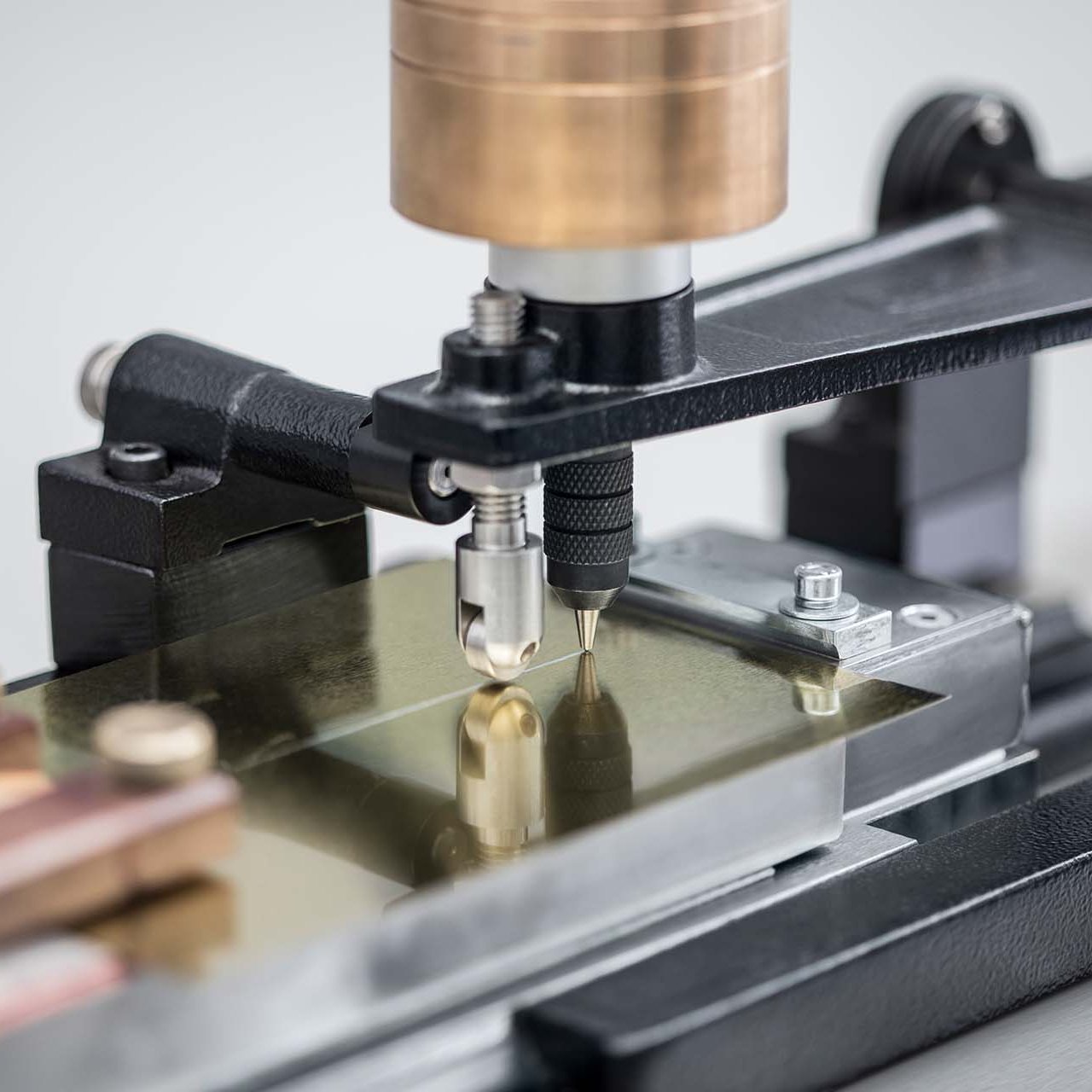
Fig. 3: TQC-sheen scratch
A commonly used test method for evaluating the COF values of surfaces is the Altek 9505 mobility/lubricity tester. By traversing a weight across a sample, the coefficient of friction is determined and indicated directly on the electronic analog meter.10 Results obtained by these two methods of testing new wax grades can be found in Figure 4. The formulation used is a solventborne, bisphenol-A-free, polyester/melamine-based clearcoat, and all wax additives are used with 1% solid wax on total formulation.
CERAFLOUR 999 and CERAFLOUR 996 R are micronized wax additives based on PTFE-modified PE wax and serve as the market standard for comparison. Also, a coating sample without wax additive can be found in the figure. The results clearly show that all products can lower the COF of coating surfaces from 0.30 (without wax), to around 0.06 in total, using a wax additive. The values between PTFE-based and new PTFE-free products are highly comparable. The same statement is valid for the sheen hardness in this coating. The control sample without the wax additive shows a low performance level with just 100 g of scratch resistance. Using each wax additive, it is possible to increase scratch resistance up to 900 g. An exchange of PTFE-based wax additives with new PTFE-free products is possible, without losing performance.
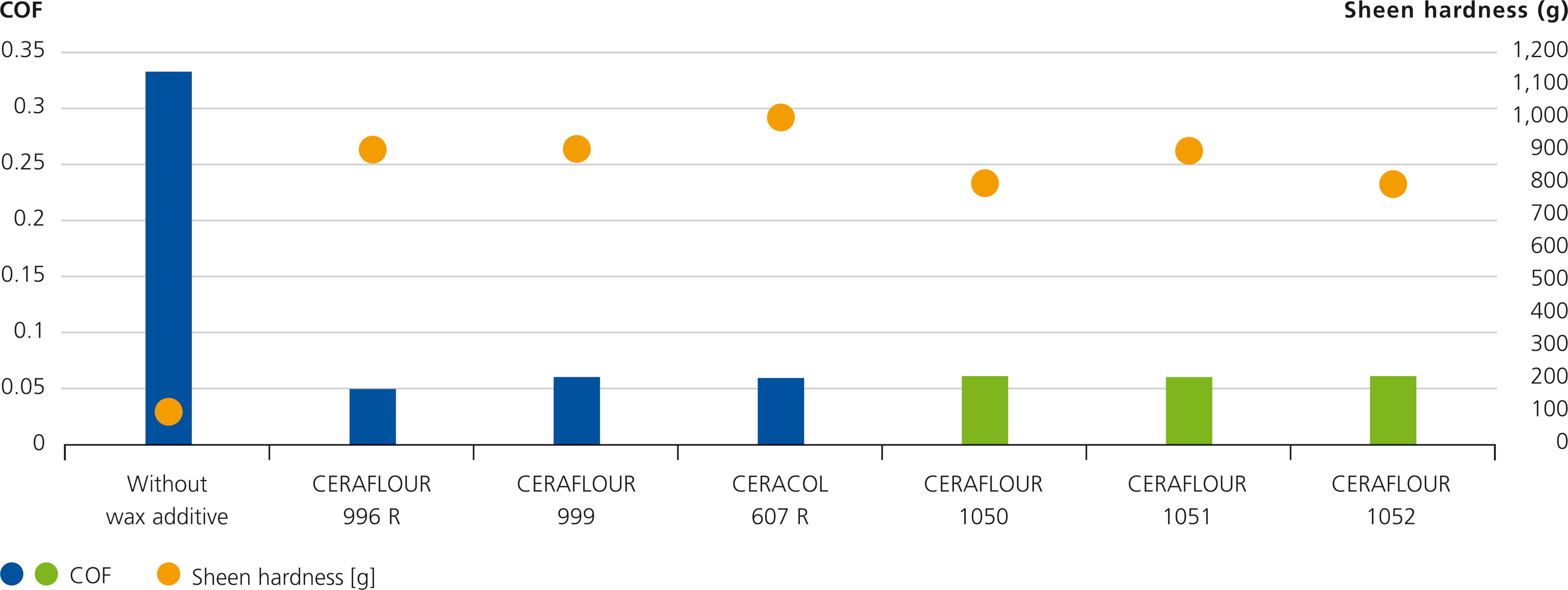
Fig. 4: Comparison of COF and sheen hardness in a BPA-NI can coating clearcoat
Another area of application that is especially important is coil coatings, where the metal is coated before forming it into the desired shape. Prepainted metal provides a high-quality painted surface in a wide array of colors and textures. The surface of a prepainted metal can be either very matt or high gloss, smooth, orange-peel, or textured. Prepainted metals are available in a variety of steel and aluminum grades and alloys. Although the organic coatings used in coil coatings have a lower dry-film thickness than post-applied films such as automotive coatings, they still provide a particularly outstanding mechanical and optical performance. The continuous coil coating process offers the highest quality assurance standards through coil-to-coil consistency.11 This means that the desired values for COF and abrasion resistance must be precisely reproducible, reliable, and at perfectly adjusted levels to keep the application process running and allow the cutting and forming of all part types after the coating process. Of course, this should not cause damage to the coating itself or to the tools used for the cutting and forming processes. As well as excellent mechanical performance, the coating must provide constant gloss levels and good leveling with little to no flash-off time after application.12
An effective way to evaluate abrasion resistance in coil coatings is the Taber test (Figure 5). For this test, a test panel, approximately 100 mm in a square or round form, is mounted to a turntable platform that rotates on a vertical axis at a fixed speed. Two Taber-abrasive wheels, which are applied at a specific pressure, perform a characteristic rubbing-wear action in contact with the test specimen to generate a sliding rotation of the two abrading wheels. As the turntable rotates, the wheels are driven by the sample in opposite directions. One abrading wheel rubs the specimen outward toward the periphery and the other, inward wheel rubs toward the center, while a vacuum system removes any loose debris created during the test.13
The loss of weight is measured in milligrams after a specified number of rotating cycles. In Figure 6, the wax additives CERAFLOUR 996 R and CERAFLOUR 999 again serve as market standards for comparison with this solvent-based polyester/melamine coil coating system. All wax additives are used with 1% solid wax on total formulation. This shows that new wax additives CERAFLOUR 1050, CERAFLOUR 1051, and CERAFLOUR 1052 can offer an abrasion resistance that is highly comparable to the PTFE-based standards. They each greatly lower abrasion in comparison to the control sample without additive and keep the gloss at the same high level.
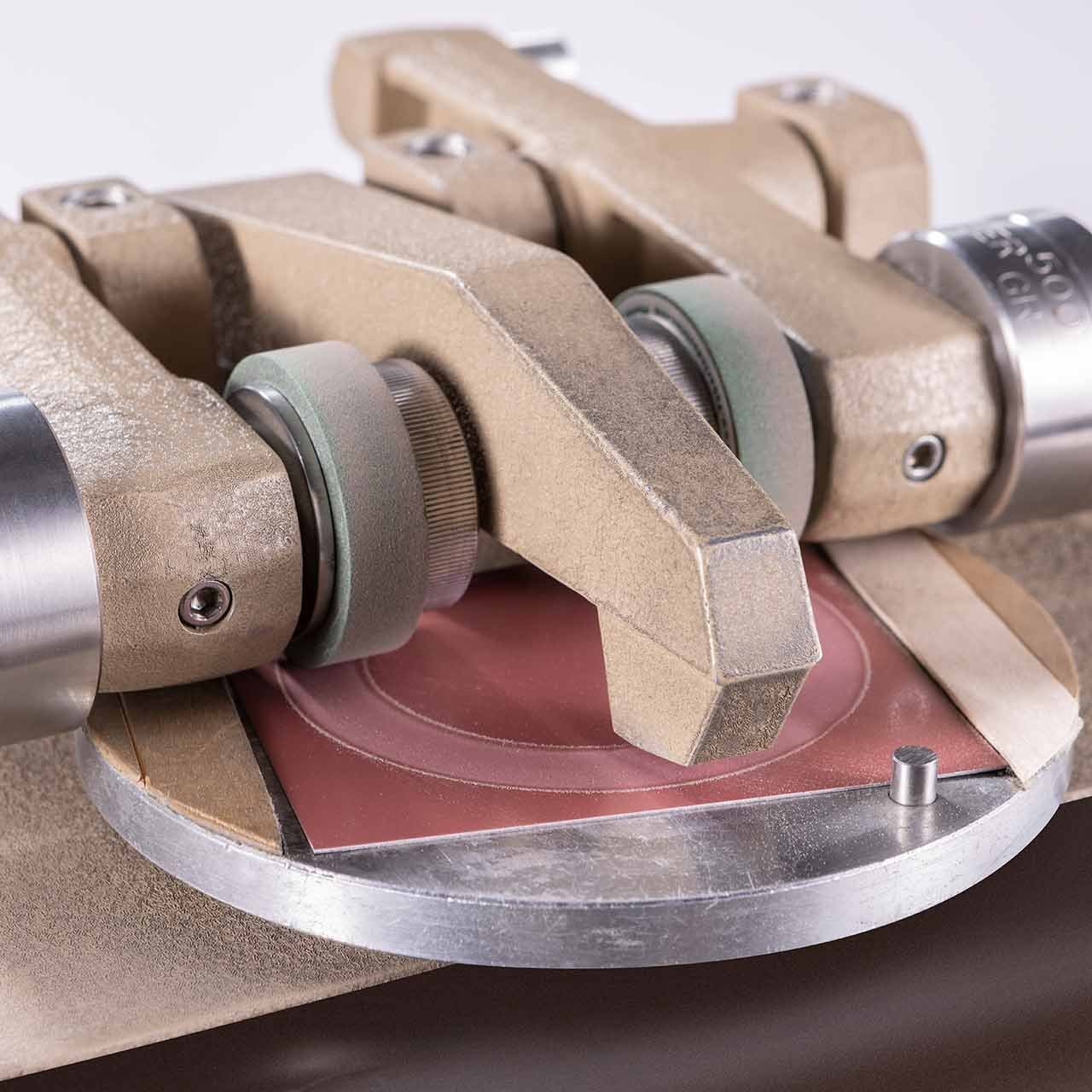
Fig. 5: Taber test
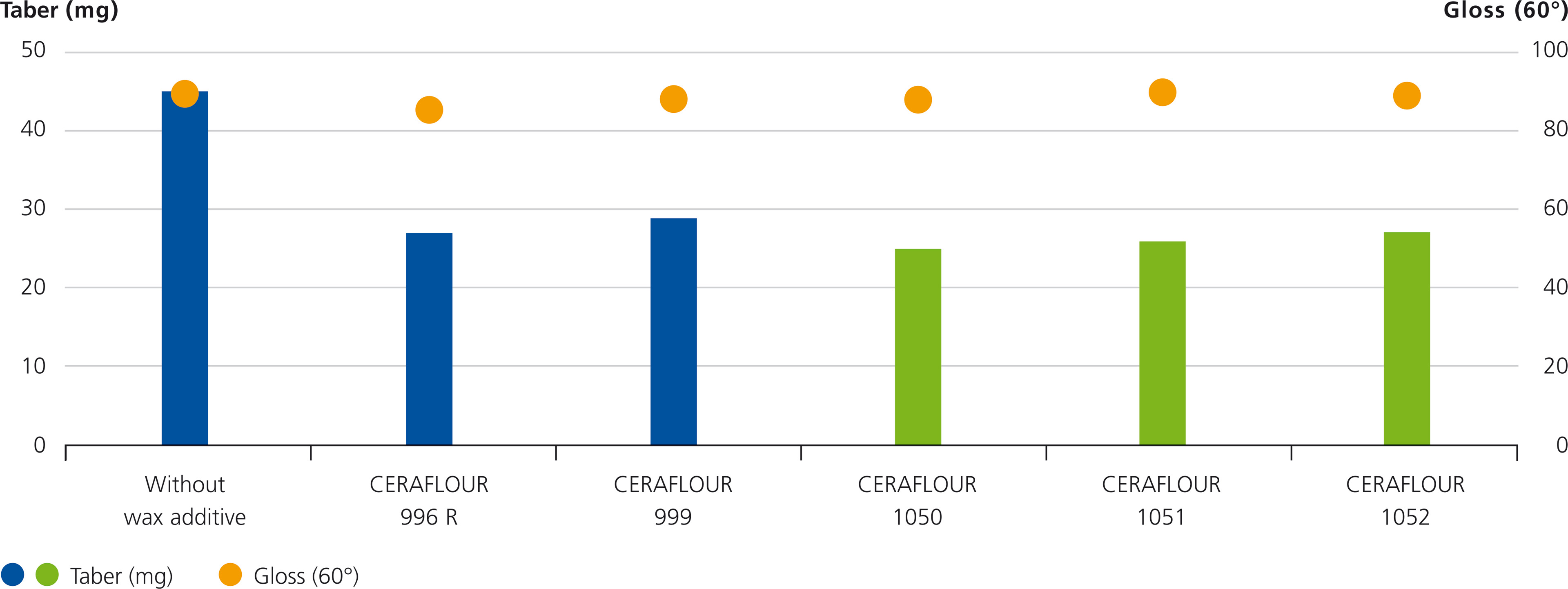
Fig. 6: Comparison of Taber abrasion and gloss in polyester/melamine coil coating
In the same polyester/melamine coil coating system, it is also clear that the new PTFE-free wax additives can have an additional benefit. They each show excellent leveling and a high distinctness of image (DOI) in comparison to the control sample, the without wax additive. In Figure 7, the reflection of a lamp is shown in the gloss angle on the coating surface. All new PTFE-free alternatives show superb leveling, but wax additive 1051 displays especially outstanding optical performance in this testing system.
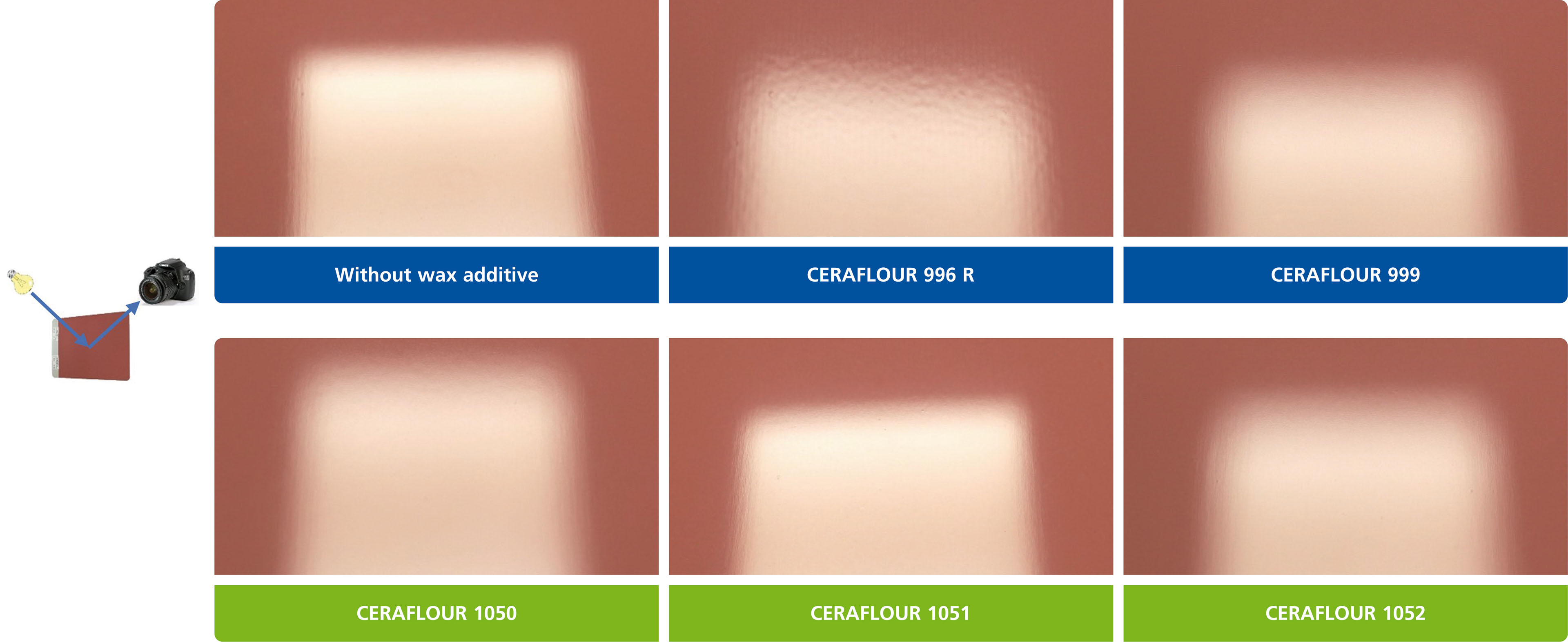
Fig. 7: PTFE-free wax additives CERAFLOUR 1050, CERAFLOUR 1051, and CERAFLOUR 1052 in polyester/melamine coil coating
Another particularly important area of application for PTFE-based wax additives is the broad area of general industrial coatings, ranging from coatings for computers or consumer electronics through DIY aerosol and drum coatings to coatings for agriculture, farming equipment, and automotive interiors. Industrial coatings can be used for a wide range of substrates and are available for all types of coating technology, such as radiation curing, conventional drying, heat curing, or two-pack curing. They can be solvent-based, solvent-free, or aqueous, but one thing these coatings have in common is that they need to be scratch and abrasion resistant. One additional test method in this area of application is abrasion testing according to Wazau SN 27650 (Figure 8).
The device determines the abrasion resistance of coatings. It is suitable for surfaces that are exposed to minor mechanical stress, such as friction with textiles or paper. The test for abrasion resistance, according to this standard, can be performed on nearly any flat surface area. A paper tape is pulled over a coated plate at a constant speed of 100 cm/min and pushed onto the specimen area with a defined load using a cylinder. The measure for abrasion resistance is the length of the paper tape in centimeters needed to make the carrier material visible. Additionally, a desired value in centimeters can be set to which the paper is required to move over the specimen.14
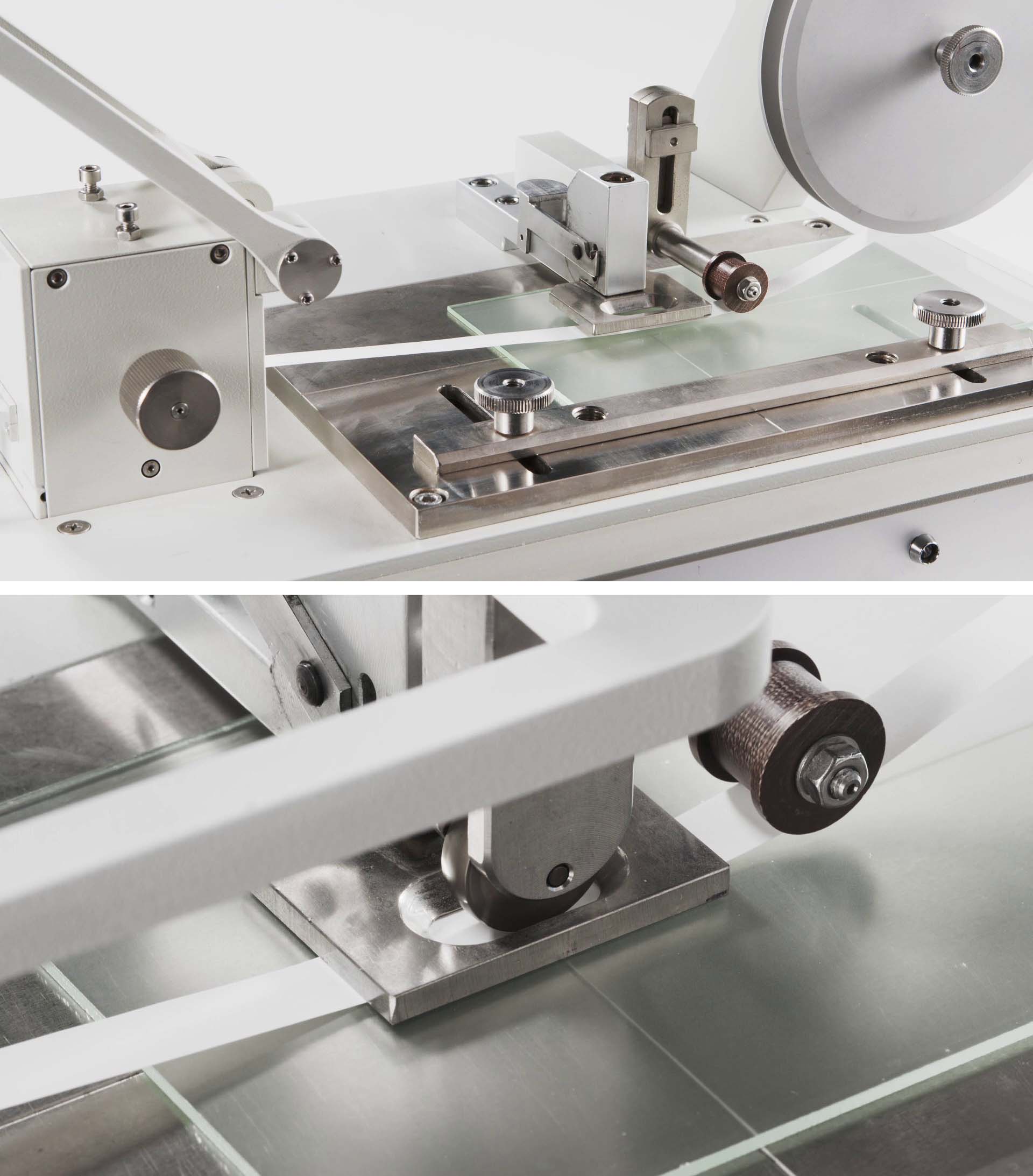
Fig. 8: Wazau abrasion testing device APG SN 27650
The new PTFE-free products are evaluated in an aqueous one-pack acrylic emulsion with 10% organic cosolvent content for Wazau abrasion and Taber abrasion (Figure 9). Each wax additive is used with 2% solid wax on total formulation. The Taber test uses CS10 grinding wheels for 1,000 rounds at 500 g pressure at each side, and the Wazau abrasion test is evaluated at the maximum paper length that the coating can withstand. In addition, each sample is evaluated optically upon exceeding a paper length of 300 cm. The results show that all new PTFE-free products perform very well in the tests. They lower the Taber abrasion from 25 mg in the control sample without wax to 4 mg loss with the new wax additives. The results are highly comparable to both PTFE-based standard wax additives. The Wazau abrasion shows that all new PTFE-free products can withstand mechanical stress as good as PTFE-based products. In particular, the pictures including abrasion after the paper length of 300 cm show less damage to the coating and a more homogenous behavior in comparison to the control sample without wax additive and to PTFE-based wax additives.
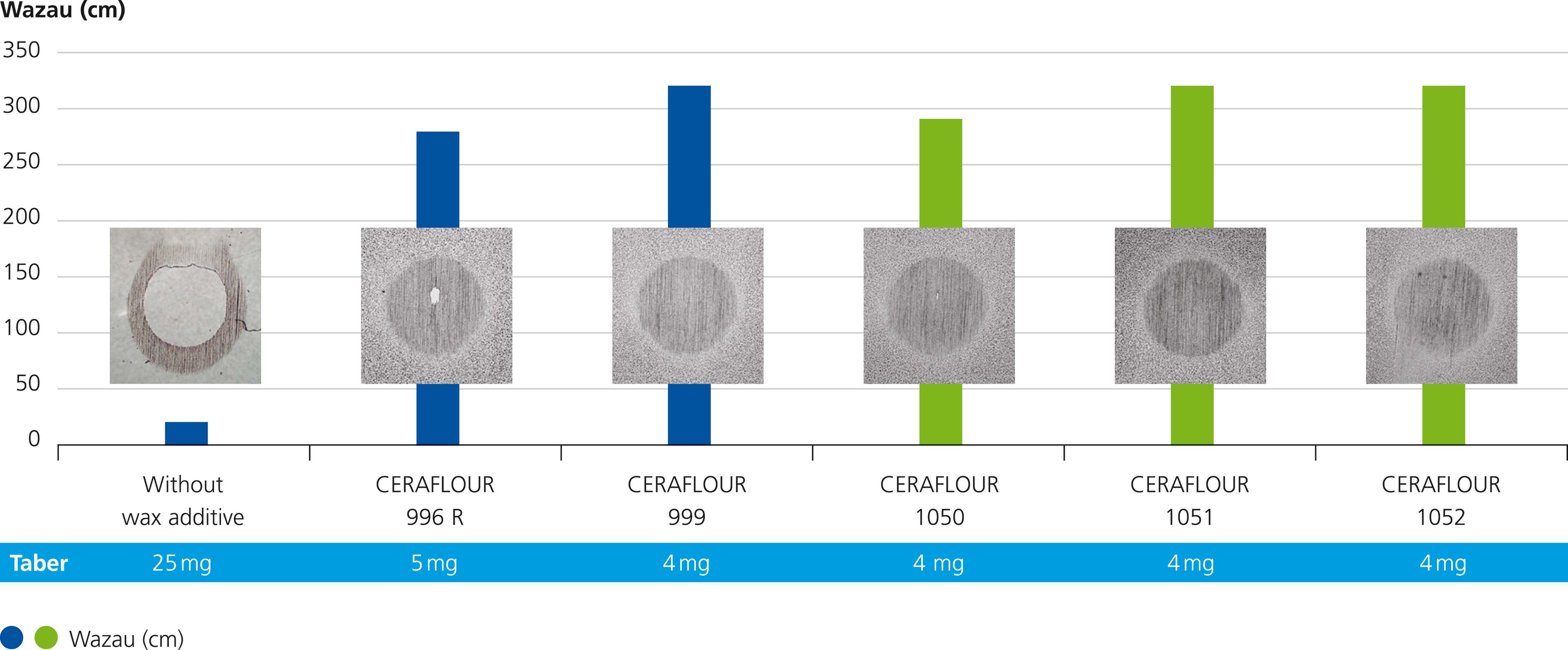
Fig. 9: Comparison of Taber abrasion and Wazau abrasion in aqueous GI coating
After the evaluation of dozens of samples in the development stage and assessing them in a wide variety of areas of application, coating systems, and using different evaluation methods, it can be concluded that the newly introduced PTFE-free wax additives have the potential to replace PTFE-based PE/PTFE wax additives (Figure 10). They can match well-known properties such as abrasion and scratch resistance without the use of PTFE. They represent an alternative to PTFE-based wax additives without the downsides of the harmful impact on human health or the pollution of the environment. The results presented are selected highlights from a wide range of extended testing and development processes, and offer an overview of the potential that these new products offer. Upon concluding the full overview of this project, it is recommended to evaluate all three new products as replacements for PTFE-based wax additives, because the individual results can be system dependent. The main recommendation is to test CERAFLOUR 1050 especially for clearcoats and haze-sensitive systems, CERAFLOUR 1052 for systems with a lower COF demand, and CERAFLOUR 1051 where the best overall results are required in a wide range of application areas.
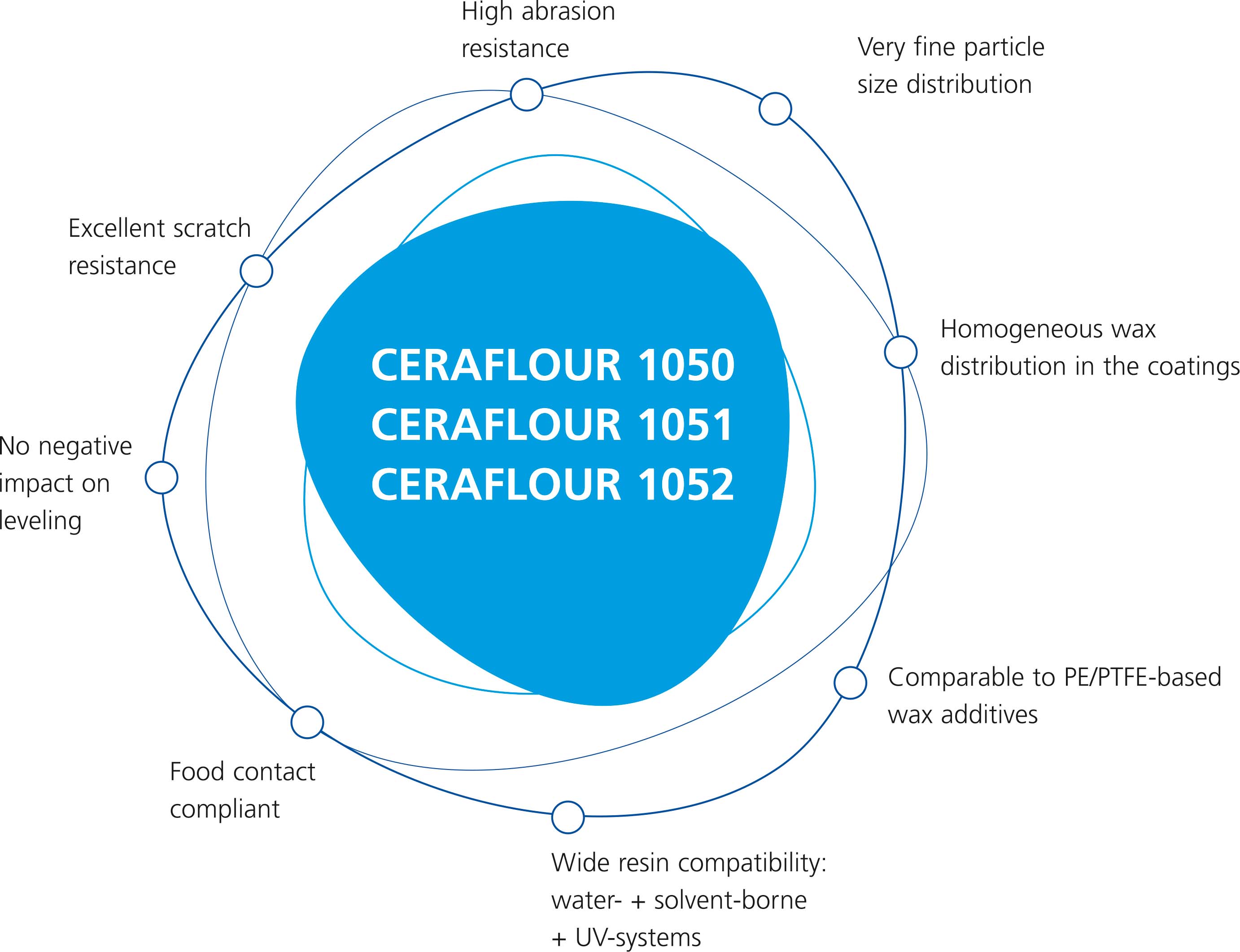
Fig. 10: New family members
1 Streitberger, G. Lackiertechnik. 2002.
2 Nanetti, P. Lackrohstoffkunde. 2009.
3 ECHA. (2023, January). https://echa.europa.eu/hot-topics/perfluoroalkyl-chemicals-pfas.
4 EPA. (2023, January). https://www.epa.gov/pfas.
5 OECD. (2023, January). https://www.oecd.org/chemicalsafety/portal-perfluorinated-chemicals.
6 BYK Regulatory. (2023, January). https://www.byk.com/en/service/regulatory-affairs/food-contact.
7 ICS. (2023, January). https://chemsec.org/.
8 Siliconexpert. (2023, January). https://www.siliconexpert.com/pfas-usa/.
9 Industrial Physics. (2023, January). https://industrialphysics.com/product/mechanised-scratch-tester-705/.
10 Altek. (2023, January). http://www.altekcompany.com/tech/productspecs/9505AE.pdf.
11 ECCA PPM. (2023, January). https://prepaintedmetal.eu/874/893.
12 Sander, J. Coil Coating. 2014.
13 Taber. (2023, January). https://www.taberindustries.com/taber-rotary-abraser.
14 Wazau. (2023, January). http://www.wazau.com/en/products/materialtesting/tribology/surface-testing/abrasion-testing-device-apg-sn-27650.html.
Featured additives
Downloads
Any questions? Contact our additive experts!
